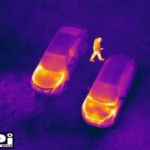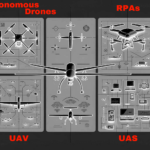1. Object Detection and Tracking
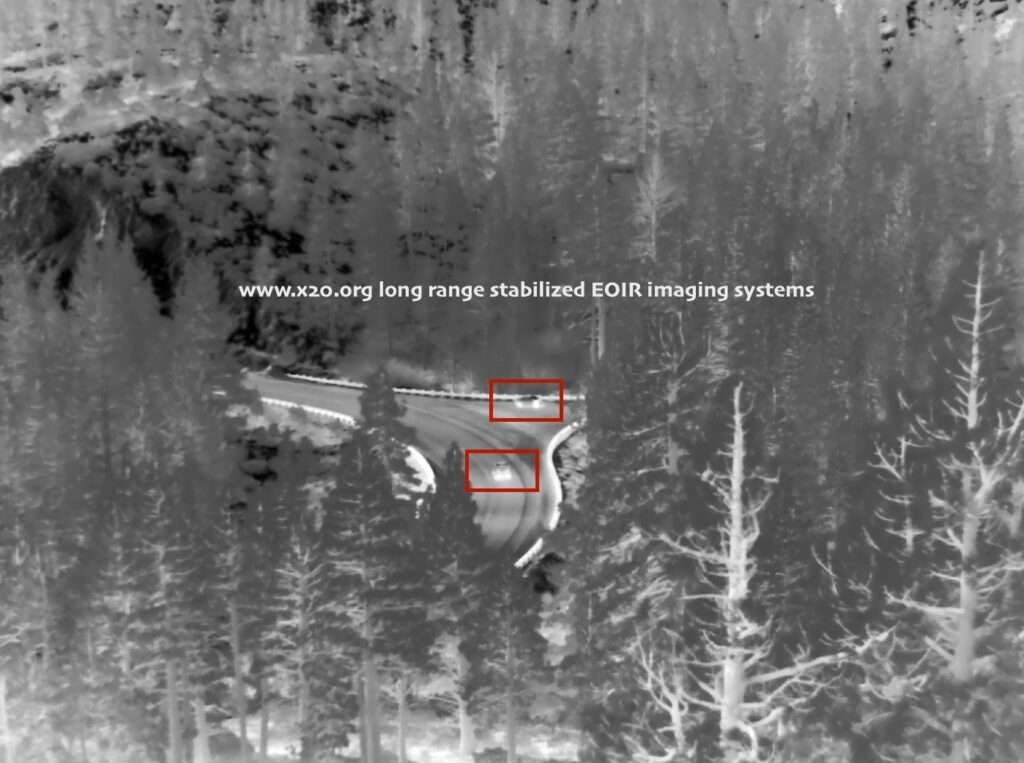
Object Detection and Tracking: AI and Thermal Imaging at Work
Thermal imaging provides a unique advantage in object detection and tracking, crucial in sectors including the military, law enforcement, and wildlife conservation. It generates images based on heat rather than light, delivering clear pictures in total darkness, through smoke, or in conditions limiting visibility.
Integrating artificial intelligence, specifically deep learning, with thermal imaging enhances effective object identification and tracking. This combination forms an invaluable tool for various sectors.
Military Applications
In the defense sector, thermal imaging and AI aid a wide range of functions, from surveillance to target identification. Modern military equipment, like drones and other unmanned aerial vehicles (UAVs), come equipped with thermal imaging devices. These devices detect the heat signatures of people, vehicles, or other objects of interest. AI algorithms then analyze these thermal images, differentiating between friend and foe, or identifying specific types of vehicles or equipment.
These advanced AI algorithms also track these identified objects and alert operators about changes or movements. This real-time information often proves crucial, making the difference between mission success and failure.
Security and Law Enforcement
Security and law enforcement agencies use thermal imaging and AI for surveillance, particularly in low-light or challenging conditions. They monitor large areas, such as borders or the perimeters of sensitive installations, detecting any human or vehicular activity. AI algorithms analyze these activities, alerting authorities in real-time about any suspicious behavior3.
Additionally, these technologies find use in search and rescue operations. Drones equipped with thermal cameras can quickly search large areas, detecting the heat signatures of people, even in difficult weather conditions or rough terrains. The AI system then guides rescuers to the location.
Deep Learning and Convolutional Neural Networks
Deep learning employs convolutional neural networks (CNNs), which are designed to automatically and adaptively learn spatial hierarchies of features from the provided data. These networks use mathematical operations, such as convolution and pooling, to process images. Thermal images serve as inputs to these CNNs, and the AI system identifies objects based on unique heat signatures.
In summary, the application of AI to thermal imaging is bringing a significant shift in object detection and tracking capabilities, offering improved accuracy, faster processing, and better decision-making support in various sectors.
2. Predictive Maintenance
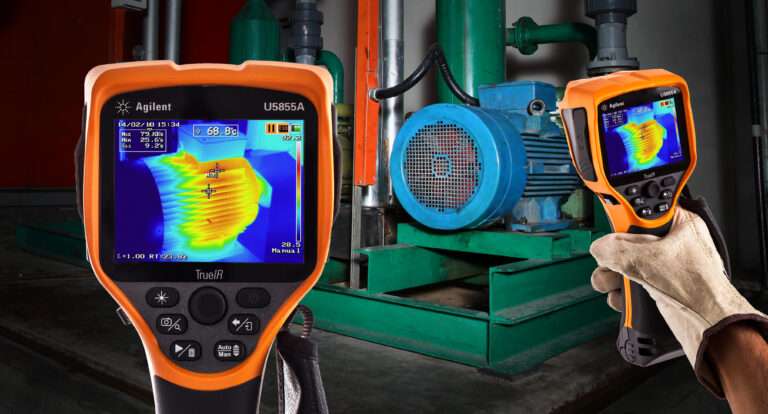
Industries continually face the unpredictability of system breakdowns, which often result in significant downtime and economic losses. Implementing predictive maintenance, a solution that combines the strengths of AI and thermal imaging, can help mitigate these issues.
Concept and Functioning of Predictive Maintenance
Predictive maintenance uses thermal cameras to monitor the operational state of machinery, capturing heat emissions often invisible to the naked eye. Since overheating typically precedes equipment malfunction or failure, these thermal images play a crucial role in preventive measures.
AI algorithms then process data from these thermal cameras. Using machine learning models trained on a vast dataset of thermal images from various operational scenarios, the algorithms learn to distinguish normal and abnormal thermal patterns associated with the equipment’s operation. After this training, the algorithms can predict potential faults or failures when they detect abnormal thermal patterns, alerting the maintenance team to intervene before a breakdown occurs.
Applications of Predictive Maintenance
This innovative fusion of AI and thermal imaging has found applicability across several industries.
For instance, the energy sector, particularly power plants and renewable energy installations like wind turbines, uses predictive maintenance to maintain optimal efficiency. Thermal imaging can detect early signs of mechanical issues in a wind turbine, such as overheating components. AI then analyzes these thermal images, identifying abnormal heat, potentially preventing a costly breakdown.
The manufacturing sector, known for its extensive use of heavy machinery, also reaps the benefits of predictive maintenance. Companies like Siemens and Bosch have incorporated thermal imaging and AI into their manufacturing processes. Regularly monitoring their equipment with these technologies reduces downtime, saves costs, and enhances overall productivity.
In transportation, railways use predictive maintenance for system monitoring. AI algorithms analyze thermal images of train components and identify overheating parts. Early detection facilitates timely repairs, preventing train delays or cancellations.
Thus, the integration of AI and thermal imaging in predictive maintenance is revolutionizing how industries operate, offering considerable cost savings, improved safety, and increased efficiency.
3. Medical Diagnostics
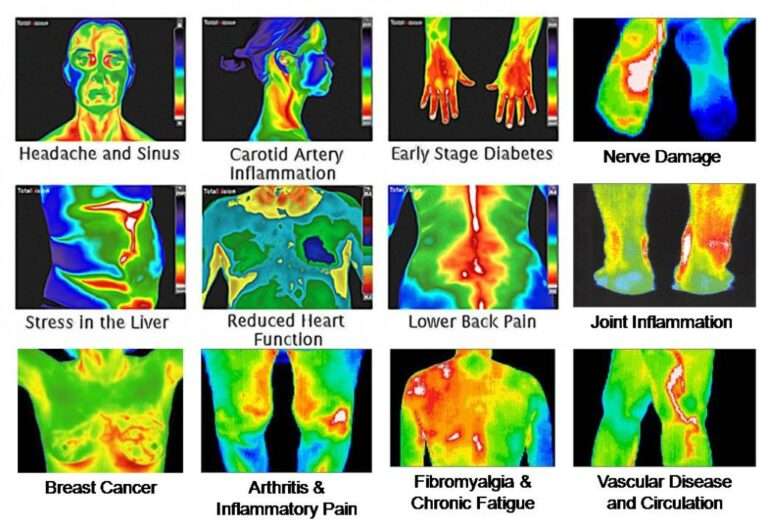
AI and Thermal Imaging in Medical Diagnostics
Artificial Intelligence and thermal imaging technology together present a powerful tool for early disease detection and patient care. These combined technologies can assist in various ways such as early detection of diseases, postoperative monitoring, cancer treatment assessment, and home-based healthcare.
Early Detection of Diseases
Deep learning, a form of machine learning that trains a model to make classifications based on a large amount of labeled data, plays a pivotal role in medical image analysis1. When it comes to fever detection, for instance, thermal cameras capture the heat pattern from a patient’s body. These heat patterns are then analyzed by AI algorithms to detect anomalies like elevated body temperature, which could be indicative of a fever.
Furthermore, thermal imaging can also be used to detect vascular diseases by examining the blood flow in the body. Abnormal temperature patterns can suggest compromised blood flow, which is a symptom of several diseases, including deep vein thrombosis and Raynaud’s disease.
Postoperative Monitoring and Treatment Assessment
AI, when coupled with thermal imaging, opens up new possibilities for post-surgical patient monitoring. For instance, following surgical procedures like grafting, AI algorithms can analyze thermal images to spot temperature changes that might signify complications, such as an infection or a graft rejection.
In cancer treatment, thermal imaging can help assess the effectiveness of therapies like radiotherapy and chemotherapy. A change in thermal patterns could indicate a response to the treatment.
Home-based Healthcare
With the rise in remote patient monitoring and telemedicine, AI-powered thermal imaging can make home-based healthcare more effective. It can be used to monitor vital signs or detect health anomalies, alerting healthcare providers if intervention is necessary.
This advancement can offer considerable convenience to patients, reduce healthcare costs, and enable early detection and management of potential health issues.
Machine Learning Algorithms in Medical Thermal Imaging
AI employs complex machine learning algorithms, such as neural networks, to classify the thermal images into different categories based on the data they were trained on. Over time, these AI models improve their predictive accuracy, enabling precise and early disease detection.
AI algorithms are capable of handling a large amount of data, allowing for a comprehensive analysis of patient conditions. This ability makes them a valuable asset in healthcare, where data-driven insights can be life-saving.
Hence, the integration of AI and thermal imaging opens up innovative opportunities for disease detection, treatment assessment, patient monitoring, and healthcare delivery.
4. Agriculture
In the world of agriculture, the convergence of AI and thermal imaging technology is creating a new paradigm for monitoring crop and soil health. This cutting-edge approach, explored in an article published in the AI & Society journal, has the potential to transform farming practices, paving the way for smarter and more efficient agriculture.
Monitoring Crop and Soil Health
Precision farming techniques involve making minute adjustments based on the specific needs of individual plants or specific areas of a field. This is where thermal imaging comes in. Thermal cameras mounted on drones can provide detailed images that reveal the health of crops and the condition of the soil. They do this by detecting variations in temperature and heat radiation which can indicate water stress in crops, soil moisture levels, and even the presence of certain pests or diseases.
AI and Machine Learning: Turning Images into Insights
The AI component of this technology involves the processing and analysis of these thermal images. Through the application of machine learning algorithms, AI can differentiate between normal and abnormal thermal patterns that correspond to healthy and unhealthy crop conditions. Machine learning models trained with large datasets of thermal images can classify these images into categories, such as healthy crops, water-stressed crops, diseased crops, or pest-infested crops3.
This classification capability allows farmers to take preventative measures or to apply targeted treatment to affected areas, thereby reducing crop loss and increasing yield.
Real-World Applications
This AI and thermal imaging technology have been put to practical use in several regions across the world. In the US, for instance, farmers have been using these tools to monitor the health of various types of crops, including corn, soybeans, and wheat. Similarly, in Australia, vineyards have been employing drones equipped with thermal cameras and AI systems to monitor vine health and detect signs of disease early on.
Overall, the combination of AI and thermal imaging is set to revolutionize agriculture, enabling farmers to make more informed decisions and ultimately increase productivity.
5. Fire Detection and Management
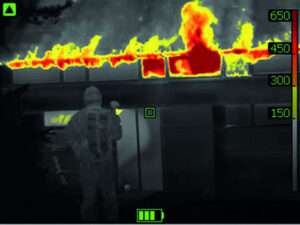
Fire detection and management is an area where AI and thermal imaging technology synergistically combine to create a powerful tool for real-time alerts and predictive analysis. A study in the Journal of Environmental Management outlines the utilization of machine learning algorithms to enable early fire detection using meteorological data.
Enhanced Fire Detection
Traditional methods of fire detection often rely on smoke detection or manual reporting, which can be delayed or ineffective under certain conditions. Thermal cameras, however, can identify heat signatures from fires that might be invisible to the human eye or standard cameras. This capacity for detecting heat signatures is particularly valuable in environments with dense smoke or during night-time operations.
The Role of AI
AI enters the equation by processing the thermal images captured by these cameras. Through advanced machine learning algorithms, AI can analyze these images to detect any abnormal thermal patterns that may suggest the presence of a fire. Upon detection, the AI system can instantly alert relevant authorities or response teams, enabling a quick and effective response.
6. Autonomous Vehicles
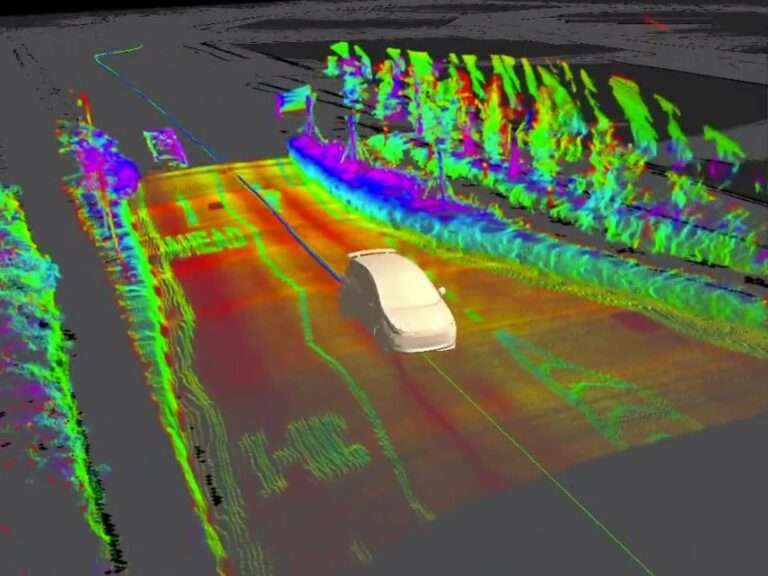
Optimal Obstacle Detection
In autonomous vehicles, traditional sensor technologies such as LIDAR (Light Detection and Ranging) and RADAR (Radio Detection and Ranging) might falter under adverse weather conditions or during night-time operations. However, thermal cameras can effectively detect heat signatures, thereby identifying living beings, vehicles, and other obstacles, regardless of light or weather conditions.
The Role of AI in Processing Thermal Data
Once the thermal cameras capture this data, AI steps in. The thermal images serve as input to AI algorithms that use a variety of machine learning techniques, such as deep learning, to analyze and interpret the data. Deep learning, which primarily employs Convolutional Neural Networks (CNNs), moves over the input image, identifies patterns, and uses these patterns to comprehend the contents of the image.
Implications for Safety and Performance
The integration of thermal imaging and AI significantly improves the safety and performance of autonomous vehicles. Vehicles can gain a better understanding of their surroundings, which reduces the risk of accidents caused by unforeseen obstacles. Additionally, this technology expands the vehicle’s operational time, enabling safe driving under poor light or adverse weather conditions.
Real-World Implementations
Leading autonomous vehicle companies demonstrate the real-world application of this technology. For instance, Waymo, the self-driving car project from Google, utilizes high-resolution thermal imaging along with AI algorithms to identify pedestrians, cyclists, and other vehicles in various conditions. Another example includes FLIR Systems, which partnered with Veoneer, a leading automotive safety company, to integrate thermal sensing cameras into autonomous vehicles. This partnership leverages AI to improve safety and perception5.
In conclusion, merging AI with thermal imaging technology has the potential to propel the capabilities of autonomous vehicles, enhancing their safety and operational efficiency across various conditions.
7. Search and Rescue Operations
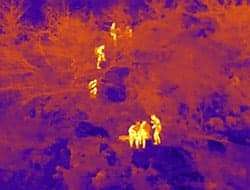
AI and Thermal Imaging: Revolutionizing Search and Rescue Operations
Search and rescue operations, especially those conducted under adverse conditions, are challenging due to their time-sensitive nature and the vastness of areas that need to be covered. The incorporation of AI and thermal imaging technology into these operations has dramatically increased their success rates and overall efficiency.
Transforming Aerial Surveillance with Thermal Imaging
Traditionally, search and rescue operations relied heavily on human resources, conducting ground searches that were time-consuming and often inefficient. However, the advent of drones equipped with thermal imaging cameras has revolutionized aerial surveillance, providing real-time video feeds even in conditions of limited visibility, such as at night or in obscured vision.
Thermal imaging technology allows these drones to detect heat signatures from humans or animals, making it possible to locate individuals even in harsh environments or during darkness.
AI: The Brain Behind the Operation
The role of AI in this process is to analyze the thermal images captured by drones. AI algorithms can identify and track heat signatures, differentiating between humans, animals, and other objects based on the unique patterns of each signature.
These AI algorithms rely on deep learning, a type of machine learning that imitates the workings of the human brain in processing data and creating patterns for decision making. More specifically, Convolutional Neural Networks (CNNs) are commonly used for this purpose. These neural networks are designed to automatically and adaptively learn spatial hierarchies of features from thermal images.
Making a Difference in the Real World
AI-enhanced thermal imaging technology is a proven asset in various search and rescue operations around the globe. Consider, for example, a mountain rescue operation in Scotland. In this case, operators used a drone equipped with thermal imaging technology to locate a lost hiker in under an hour. This rapid operation, which could have otherwise spanned days, not only completed faster, but also lowered risk for the rescue team4.
In another case, a drone operator used a drone equipped with a thermal camera to locate a missing child in a forest in Wisconsin, USA. The drone was able to detect the heat signature of the child, and the rescue team was guided to the location, resulting in a successful rescue5.
The marriage of AI and thermal imaging technology is shaping a future where search and rescue operations can be conducted faster, safer, and with significantly improved success rates. These advancements, along with future developments, are poised to make a significant difference in how we respond to emergency situations and save lives.

